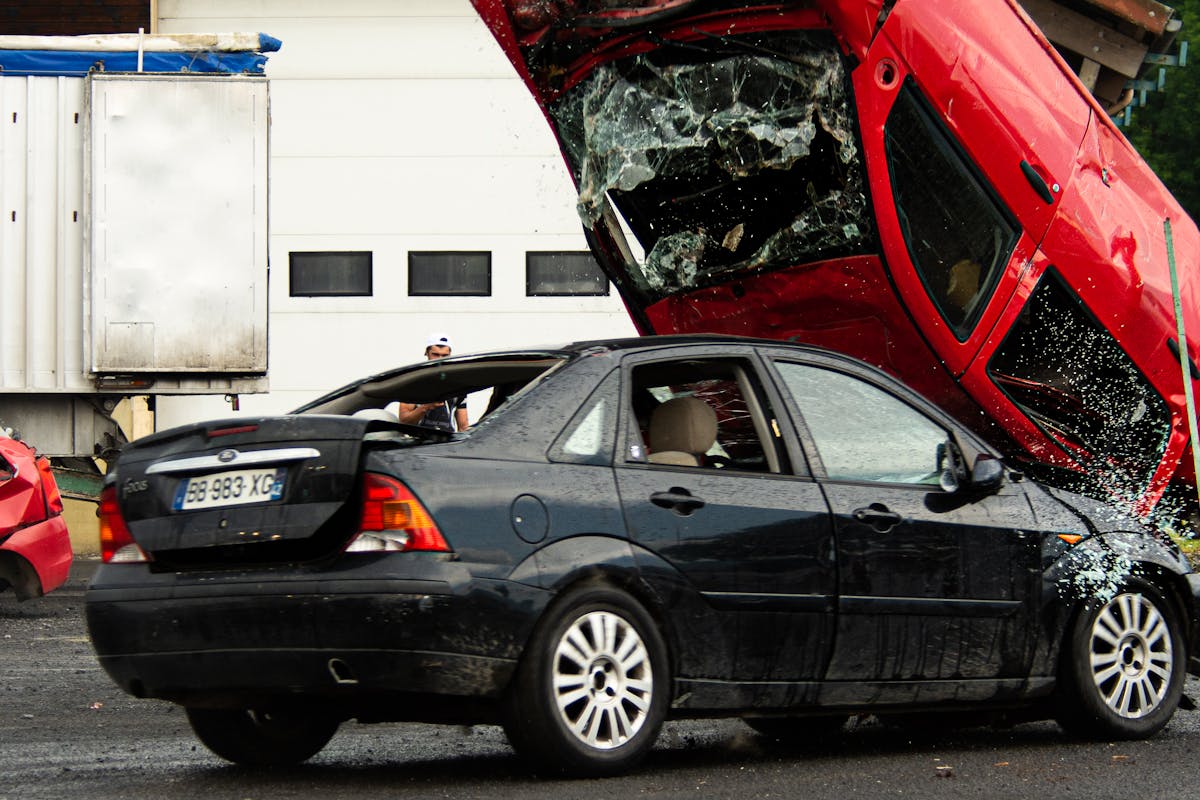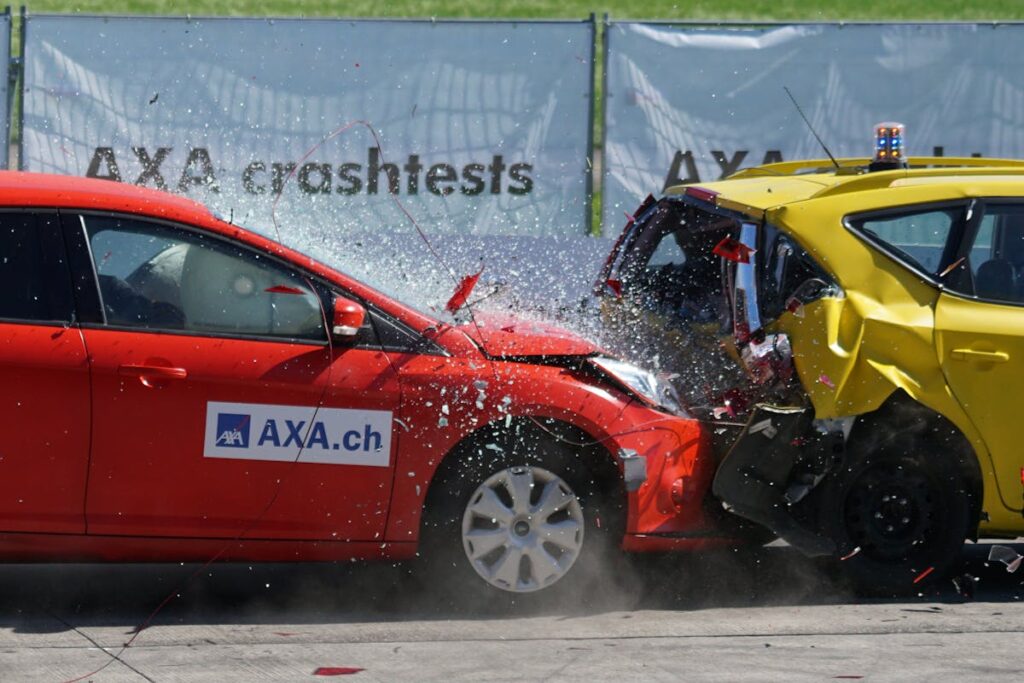Historic vehicle accidents have dramatically reshaped the landscape of vehicle safety, acting as catalysts for the evolution of crash tests and vehicle safety ratings. From the infamous Ford Pinto case, which triggered significant regulatory changes, to other notable incidents exposing critical design flaws, the impact has been profound and far-reaching. These incidents have necessitated the need for more stringent safety measures and have led to the introduction of state-of-the-art safety technologies. However, the question remains, how effective are our current crash testing methodologies and safety ratings in predicting real-world accident outcomes? This topic invites further exploration into the effectiveness and future of vehicle safety assessments.
Understanding Crash Tests
In the domain of vehicle safety, understanding crash tests is of vital importance. These tests, implemented using various crash test methodologies, serve as the core of vehicle impact analysis and contribute considerably to the overall safety ratings of vehicles.
Crash tests are performed in controlled environments. They involve propelling a vehicle into stationary and movable barriers under different conditions, intending to simulate real-world scenarios. The results from these crash tests provide essential insights into the vehicle’s structural integrity, its ability to protect occupants, and its potential for causing harm to other road users.
The methodologies used in crash tests are diverse, each designed to examine different aspects of vehicle safety. Frontal impact tests, for instance, focus on the vehicle’s ability to withstand head-on collisions. Side impact tests, on the other hand, evaluate the vehicle’s resistance to lateral impacts, such as those occurring at intersections.
In essence, crash tests and their methodologies form the backbone of vehicle impact analysis. Their thorough and meticulous execution is integral to ensuring vehicle safety, and by extension, the safety of all road users. A detailed understanding of these tests is consequently essential for anyone operating in the vehicle safety domain.
Evolution of Safety Ratings
Over the years, the landscape of safety ratings has undergone considerable transformations. Initially, safety ratings were rudimentary, often lacking in thoroughness and detail. However, the advent of safety innovations and regulatory advancements led to a paradigm shift in how vehicle safety is evaluated and rated.
The evolution of safety ratings can be attributed to the incorporation of advanced technologies and methodologies in crash testing. Remarkably, the introduction of high-speed cameras and dummies equipped with sensors provided a more accurate and detailed analysis of collision impacts.
Regulatory advancements have also played a pivotal role in reshaping safety ratings. For instance, the establishment of stringent safety standards and protocols by entities like the National Highway Traffic Safety Administration (NHTSA) and the Insurance Institute for Highway Safety (IIHS) has driven the evolution of more thorough and robust safety ratings systems.
The incorporation of safety innovations such as anti-lock braking systems, electronic stability control, and advanced airbag systems has further enriched the safety ratings landscape. These innovations, coupled with regulatory advancements, have greatly enhanced the credibility and reliability of safety ratings, thereby contributing to improved vehicle safety overall.
Influential Historic Accidents
In the domain of vehicle safety ratings, the study of historical accidents and their subsequent impact plays a vital role. These notorious automotive tragedies have not only transformed public perception but have also compelled manufacturers to reassess and improve their safety measures. By analyzing the lessons derived from these disasters, we can better understand the evolution of safety features post-accidents and the ongoing efforts to increase vehicle safety standards.
Notorious Automotive Tragedies
Tragedy, an abstract but heavy term, has been an unfortunate companion in the history of automotive development. The journey towards automotive safety has been marked by a series of notorious incidents that have shaped the path of crash test advancements. Each one has left a lasting impact on the industry, driving essential changes in design, manufacturing procedures, and safety standards.
- Ford Pinto (1970s): This model became infamous due to a design flaw that could cause the fuel tank to rupture and ignite during a rear-end collision. This led to a significant number of fatalities and injuries, raising questions about the manufacturer’s prioritization of cost over safety.
- Chevrolet Corvair (1960s): Ralph Nader’s book, Unsafe at Any Speed, highlighted the dangerous handling characteristics of this vehicle. It had a tendency to roll over in sharp turns due to its rear-swing axle suspension.
- Audi 5000 (1980s): This vehicle was plagued with allegations of unintended acceleration, which led to numerous accidents. Later investigations revealed that driver error was mainly at fault, but the incident prompted changes in how car controls are designed and labeled.
These incidents underscore the importance of continuous advancements in crash test procedures and automotive safety regulations to guarantee the protection of vehicle occupants.
Lessons From Disasters
Drawing from the past, we can see that each automotive disaster has served as a poignant lesson, influencing significant improvements in vehicle safety. For example, the Ford Pinto fuel tank controversy in the 1970s led to increased emphasis on fuel system integrity and disaster prevention. This incident catalyzed a shift in the industry, resulting in safety innovations such as in-tank fuel pumps and breakaway fuel lines.
The 1955 Le Mans disaster, where an accident claimed over 80 lives, prompted a critical evaluation of vehicle stability at high speeds. This led to the development of aerodynamic designs and weight distribution considerations that enhanced vehicle stability and control.
The 1960 Chevrolet Corvair rollover fiasco underscored the necessity for better handling and stability in vehicles. As a result, automakers began focusing on suspension design improvements and the implementation of electronic stability control systems.
These historic incidents have shaped the direction of automotive safety, emphasizing the value of disaster prevention. They’ve underscored the reality that safety innovations are not merely desirable features but a fundamental requirement in vehicle design. Each tragedy has therefore contributed to the continuous improvement and development of safer and more reliable vehicles.

Safety Measures Post-Accidents
Every significant automotive accident has ushered in a new era of safety measures. These incidents serve as catalysts for accident prevention and subsequent safety innovations, driving the automotive industry to constantly improve its safety standards.
Three notable measures that have emerged post-accidents are:
- Introduction of Seat Belts: Following a spate of fatal accidents in the 1950s, the three-point seatbelt was introduced by Volvo in 1959. This simple yet effective safety innovation has saved countless lives since its inception.
- Implementation of Airbags: The tragic accident of actress Jayne Mansfield in 1967, which could have been prevented by an airbag, led to the widescale adoption of this safety measure by the early 1990s.
- Advancement in Crash Testing: Post-accident analyses have consistently led to the refinement of crash tests. For example, the gruesome 1977 accident involving a Ford Pinto prompted the industry to introduce rear-impact tests.
Each of these steps symbolizes the automotive industry’s commitment to learning from past tragedies to prevent future ones. The cycle of accident, analysis, and improvement is a critical aspect of automotive safety, ensuring continuous advancements in accident prevention and vehicle safety.
Post-Accident Changes in Testing
The evolution of crash test procedures is a vital aspect of post-accident changes in testing, driven in large part by lessons learned from notable accidents. These alterations in testing have shaped and often enhanced vehicle safety ratings. We will examine this development, focusing on its impact on safety ratings and its implications for overall vehicle safety.
Evolving Crash Test Procedures
With advancements in automotive technology, crash test procedures have undergone notable evolutions, particularly in response to post-accident changes. The evolving methodologies and testing innovations have been instrumental in improving vehicle safety. The increased use of digital simulations, the inclusion of various crash scenarios and the development of advanced dummies have all contributed to the modernization of crash tests.
- Digital Simulations: Modern crash test procedures now utilize digital simulations alongside physical tests. By creating a virtual crash scene, engineers can observe and analyze crash impacts on a vehicle from multiple angles, which was not possible with traditional testing methods.
- Inclusion of Various Crash Scenarios: Evolving methodologies have led to the development of a broader range of crash scenarios. These now include side-impact crashes, pedestrian impacts, and rollovers, providing a more thorough evaluation of vehicle safety.
- Advanced Dummies: Testing innovations have resulted in the creation of advanced dummies equipped with sensors. These sensors measure the impact of crashes on various parts of the human body, providing essential data to improve vehicle safety features.
These evolutions have remarkably transformed crash test procedures, making them more effective in enhancing vehicle safety.
Notable Accident-Driven Changes
Often, it is the aftermath of unfortunate real-world accidents that leads to significant changes in crash test procedures. These incidents expose areas of improvement in vehicle safety, prompting accident reforms and stimulating new safety innovations.
For instance, the 1955 Le Mans disaster, where a car flew into the crowd, killing 83 people, was a pivotal moment that accelerated the development of robust crash testing. The accident led to the introduction of barriers, safety fuel cells, and quick release harnesses, transforming the landscape of vehicle safety.
In the ’70s, high-profile crashes involving Ford Pintos led to substantial changes in crash test procedures and regulations. The rear-end collision tests became more stringent, demanding better fuel system integrity to prevent fires.
More recently, the 1997 Diana, Princess of Wales car crash triggered widespread reforms in seatbelt laws and awareness campaigns. This incident highlighted the critical importance of seatbelt usage, leading to more rigorous seatbelt testing in crash scenarios.
These examples illustrate how notable accidents can drive significant changes in crash test procedures, catalyzing the development of safety innovations. This continuous evolution guarantees that lessons learned from each tragic incident contribute to the ongoing enhancement of vehicle safety.
Role of Safety Ratings
In the domain of vehicle safety, the role of safety ratings is paramount, especially in the wake of notable accidents that necessitate changes in testing procedures. Safety ratings, influenced by the evolution of safety technology and rating criteria, play an essential role in shaping the safety standards of the automotive industry.
- Safety Technology: Post-accident, safety ratings often reflect the implementation of new safety technology. For example, the addition of anti-lock braking systems and electronic stability control were both prompted by significant accidents and subsequently integrated into safety ratings.
- Rating Criteria: The criteria for safety ratings are constantly changing, driven by both technological advancements and lessons learned from accidents. The evolution of safety ratings has seen them expand from merely evaluating crashworthiness to also considering crash avoidance and mitigation capabilities.
- Consumer Awareness: Safety ratings, prominently displayed on vehicles and widely publicized, are pivotal in informing consumers. They guide purchasing decisions, stimulating manufacturers to prioritize safety.
Importance of Vehicle Safety Ratings
Maneuvering the complex world of car buying, one cannot underestimate the importance of vehicle safety ratings. These ratings serve as a benchmark for consumers, providing vital information about the vehicle’s reliability and performance in various accident scenarios. They give an insight into the vehicle’s capacity to protect its occupants from harm during a collision.
Increasing consumer awareness about these ratings is paramount. A well-informed buyer can make a knowledgeable decision, not just based on aspects like fuel efficiency, cost, and aesthetics, but also the vehicle’s safety profile. While all vehicles meet minimum safety standards, ratings highlight those that go above and beyond, providing superior protection.
Vehicle reliability and safety ratings are intertwined, as a vehicle’s safety features contribute greatly to its overall reliability. Anti-lock braking systems, electronic stability control, and advanced airbag systems are among the safety features that enhance a vehicle’s reliability.
In essence, vehicle safety ratings are not just figures on a page. They represent a vehicle’s potential to safeguard lives. They are a reflection of the industry’s commitment to improve safety standards continuously, thereby reducing roadway casualties and ensuring safer mobility for all.
Case Study: Safety Ratings Impact
An in-depth analysis of vehicle safety ratings, their influence on consumer behavior, and their impact on the auto industry provides revealing insights. As safety innovations become more advanced, testing methodologies have had to adapt to accurately evaluate these new features and provide meaningful ratings.
Consider the following significant points:
- Influence on Consumers: Safety ratings heavily impact consumers’ purchasing decisions. A superior rating can steer a potential buyer towards a particular vehicle, while a subpar rating can drive them away. Furthermore, safety ratings also impact the perception of a brand’s overall commitment to safety.
- Impact on the Auto Industry: Safety ratings drive competition within the auto industry. Brands endeavor to outdo each other in safety innovations, aiming for better ratings that can enhance their market presence. This competition contributes to the overall improvement in vehicle safety.
- Testing Methodologies: The importance of accurate testing methodologies cannot be overstated. These processes must evolve alongside technological advancements in vehicle safety to guarantee that ratings accurately represent the true safety capabilities of a vehicle.
Future of Crash Testing
With the rapid advancement of automotive technology, the future of crash testing is set to undergo significant changes. These transformations will be driven by automotive innovations and the integration of future technology, which will redefine the parameters of vehicle safety assessments.
As autonomous vehicles become more prevalent, traditional crash testing procedures will need to evolve to incorporate the complexity of these systems. The scope of crash tests may extend beyond physical impacts to include cybersecurity assessments, as the risk of software failures or hacking could lead to catastrophic outcomes.
Moreover, the advent of advanced driver-assistance systems (ADAS) will necessitate a paradigm shift in crash testing. Vehicle safety ratings will not just consider the car’s ability to protect occupants during a collision, but also its proficiency in preventing accidents altogether. This will involve complex simulations and tests to evaluate the efficiency of features such as automatic emergency braking, lane keeping assist, and adaptive cruise control.
Enhancing Road Safety Measures
In the domain of road safety, the enhancement of measures is a critical aspect that goes hand in hand with the evolution of crash testing. As technology advances, so does our capacity to predict and prevent road accidents. However, the effectiveness of these safety measures relies heavily on their practical application and public awareness.
Three key areas where preventive measures can enhance road safety are:
- Technological Interventions: Advanced Driver Assistance Systems (ADAS), for instance, can help in preventing accidents by alerting drivers to potential hazards.
- Infrastructure Improvements: Effective road design and maintenance can greatly reduce the risk of accidents. This includes proper signage, barrier systems, and pedestrian facilities.
- Educational Efforts: Initiatives aimed at educating the public about safe driving practices are critical. These include programs targeting young drivers, who are often at a higher risk.
While advancements in crash testing provide invaluable data for improving vehicle safety ratings, it is essential to remember that these are just one part of a larger picture. To truly enhance road safety, we must continually develop and implement thorough preventive measures across all areas of this domain.
Frequently Asked Questions
How Are New Vehicle Safety Technologies Tested and Rated?
New vehicle safety technology advancements are rigorously examined through a series of crash tests. These testing methodologies assess effectiveness under various conditions, with the results determining safety ratings that inform consumer decisions and influence industry standards.
What Is the Process for Revising Vehicle Safety Ratings?
Safety rating revisions follow a robust process involving reassessment of testing protocols, evaluating new safety technologies, and analyzing real-world vehicle performance data. This rigorous approach guarantees accurate, updated ratings reflecting the latest safety advancements in vehicle design.
How Do Crash Tests Contribute to Insurance Premium Calculations?
Crash tests markedly influence insurance premium calculations. They provide vital data for risk assessment, helping insurers understand a vehicle’s safety performance. This data assists in premium adjustments, effectively balancing costs with the degree of risk involved.
Do Vehicle Safety Ratings Affect the Resale Value of the Car?
Indeed, vehicle safety ratings greatly influence a car’s resale value. Higher safety ratings often lead to higher resale values, as they signal to potential buyers that the vehicle is reliable and less likely to incur damage.
Are There Different Crash Test Standards for Electric and Autonomous Vehicles?
Yes, there are different crash test standards for electric and autonomous vehicles. Electric vehicle standards focus on battery safety, while autonomous vehicle testing evaluates the reliability and safety of the vehicle’s autonomous features.

